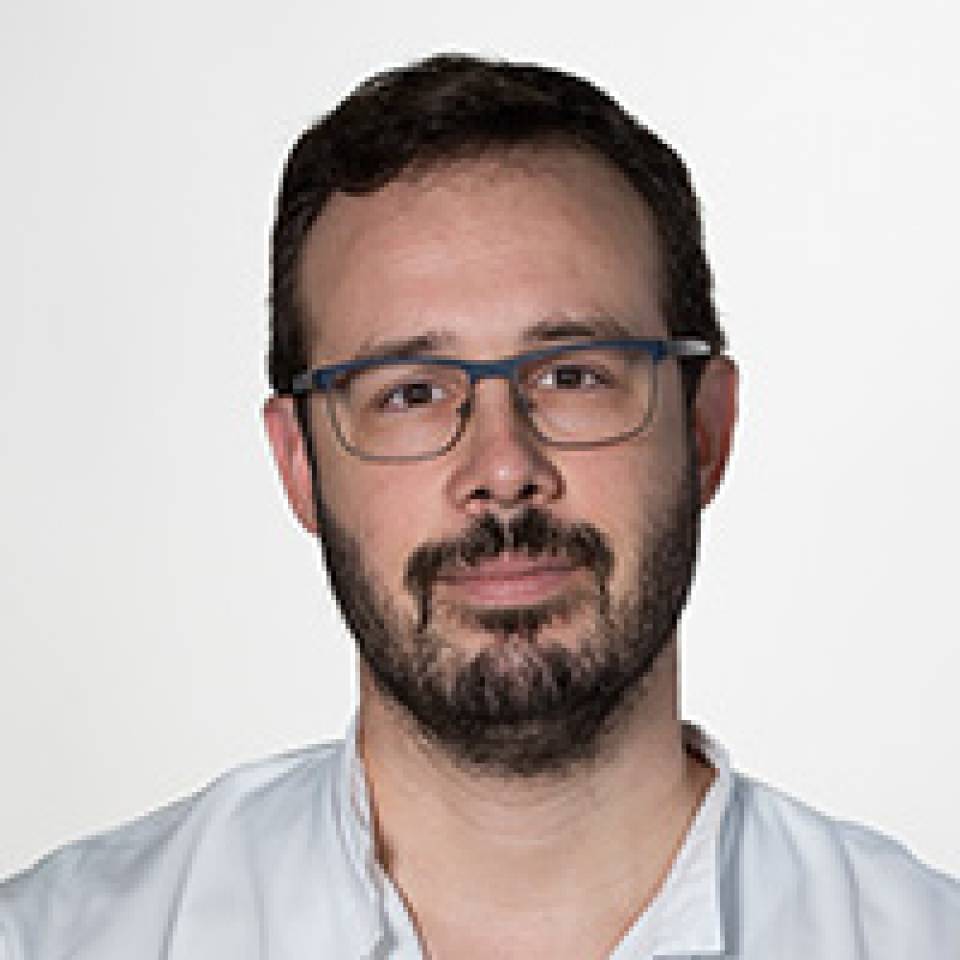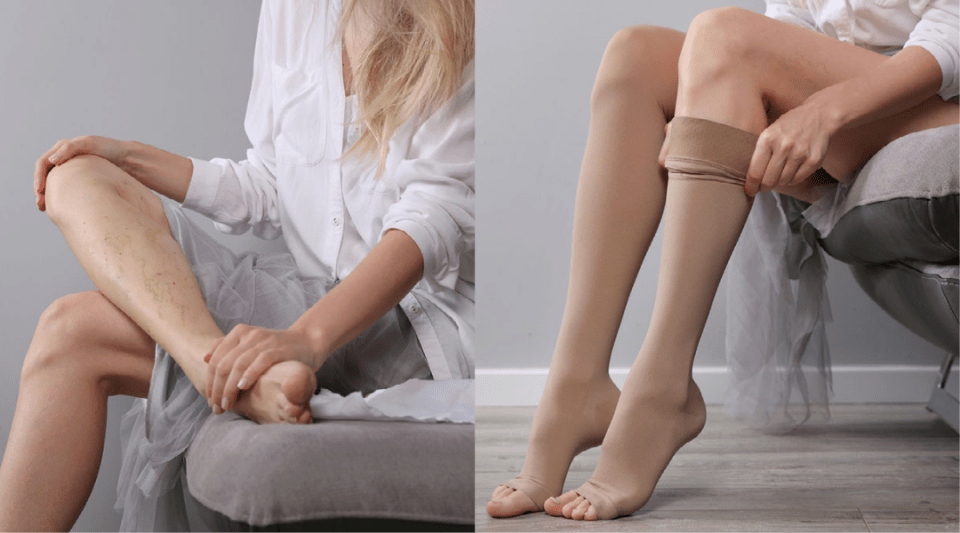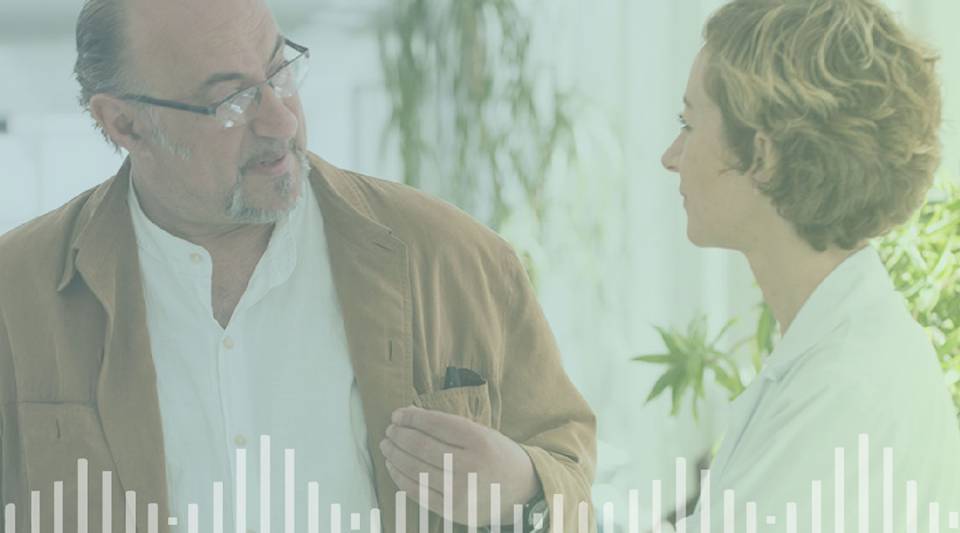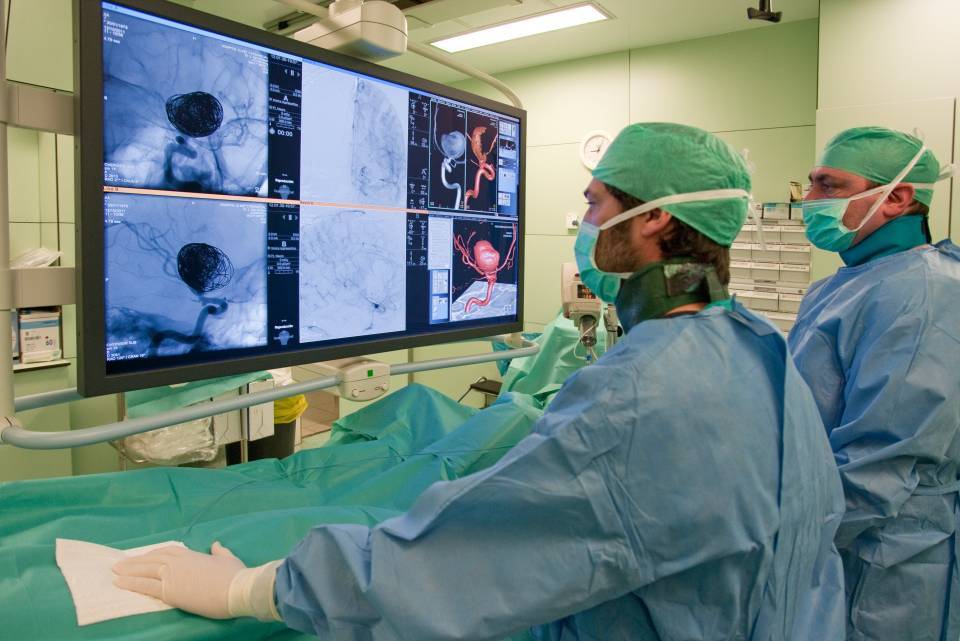- What is it?
- Causes and risk factors
- Symptoms
- Diagnosis
- Treatment
- Evolution of the disease
- Living with the disease
- Research
- Frenquently Asked Questions
-
La enfermedad en el Clínic
-
Equipo y estructura
Treatment of varicose veins
The main purpose of the treatment of varicose veins is to alleviate the symptoms and improve the quality of life of the patient. Other aims to consider are the decrease in the risk of local complications (ulcerations, phlebitis, or bleeding), as well as to treat the obvious aesthetic component.
Non-pharmacological treatment
The main therapeutic recommendations, as regards the prevention and treatment of venous insufficiency and varicose veins, are:

Physical exercise. It is a fundamental activity in the prevention and treatment of varicose vein disease due to the fact that it helps combat causes, such as overweight and sedentarism and, particularly, because with each step, the muscle contraction of the legs pump blood towards the heart, combatting the tendency to accumulate in the veins of the limbs. It is not necessary to carry out an intense physical activity. To walk quickly for 10-15 minutes regularly is more than sufficient.

Rest with the legs raised. Combat the accumulation of fluid produced due to the effect of gravity. During the day, it is sufficient to have short rests (2-3 times) with legs raised. During the night, it would be useful to raise the foot of the bed by about 10 cm. It is not recommended in patients who have heart failure or periferic arterial patology.

Cold. Its effectiveness is due to its anti-inflammatory and vasoconstrictor effect that causes narrowing of the blood vessels and prevents blood from accumulating with such ease. Showers with cold water over the legs are very recommendable, as well as to avoid hot environments and prolonged exposure to the sun.

Compression stockings. Its effectiveness in the prevention and treatment of venous insufficiency and varicose veins is clearly proven and even superior to that of any pharmacological treatment. Its benefit lies in the circular, graduated compression force, which is greater at the foot and ankle than in the rest of the leg, creating a draining or emptying effect in the limb and promoting blood return from the feet to the heart. Compression stockings are recommended to be put on while lying down, either on a sofa or in bed.

Skin hydration with moisturizing creams. These help preserve the integrity of the skin, preventing itching secondary to varicose veins, and help prevent ulcer formation by improving the skin’s elasticity in case of leg swelling.
Other treatments, such as physiotherapy, drainage massages (rising from the ankles to the groin), and pressotherapy, which can also be useful.
Pharmacological treatment

There are numerous products for treating venous insufficiency and varicose veins, known as phlebotonics. The large majority are derived from vegetable extracts, such as flavonoids, rutosides, extract of horse chestnut, vine leaves, Ruscus or Ginkgo biloba.
Despite there being many products and form different families, their effectiveness in varicose disease is mild and with a wide individual variability, since there are patients that notice a great effect, such as improving the heaviness, of the swelling feeling, or of tired legs, while others note practically nothing.
It is important to mention that their effectiveness on the varicose veins themselves and the outcome of the disease is practically zero. Thus, they are prescribed in those symptomatic cases, and in time periods of 2-3 months, and then re-assessing the need to continue the treatment depending on the improvement obtained. The preventive administration in asymptomatic varicose veins is not indicative.
Surgical treatment

The surgical treatment of varicose veins has two parts or aims. On the one hand, to correct the problem that causes varicose veins (mainly the reflux due to dysfunction of the venous valves), and on the other hand, to remove the visible veins that have become swollen.
With the aim of correcting the cause, two techniques are used:
- Phlebectomy or stripping. It completely removes the dysfunctioning part of the superficial venous system where the varicose veins originate.
- Haemodynamic surgery or CHIVA strategy. It is different from phlebectomy in that it only disconnects the specific points of the superficial venous system where the reflux occurs and conserves the majority of superficial venous system.
There is insufficient scientific evidence to demonstrate that one technique is clearly better than the other, although the CHIVA strategy is generally less aggressive than phlebectomy. Both techniques usually require an incision of 5-6 cm, normally in the groin (in the case of varicose veins accessory to the internal saphenous vein), or behind the knee (in cases accessory to the external saphenous vein).
Once the cause has been corrected, the varicose veins themselves are removed through small incisions along their path, a technique known as phlebectomy.
Both procedures (correction of the cause and removal of varicose veins) are usually performed during the same surgical intervention. Most often, the procedure is done under local anesthesia, with or without sedation. Occasionally, and in a very limited way, it may require locoregional (intradural) anesthesia. Generally, hospitalization is not required, and the patient can return home walking the same day of the procedure (as part of major outpatient surgery or MOS).
Treatment complications
The most significant complications of the treatment are:
- Infection of surgical wound. They are generally rare, although its prevalence increases when there are wounds in the groin and, especially, in overweight patients. It may require antibiotic treatment in tablet form or even a small drainage in the clinic itself. It is rarely serious.
- Haematomas or bleeding. The appearance of small bleeds or small haematomas (bruising) around the wounds is common, and usually disappear spontaneously within a few weeks. Sometimes they require a surgical revision.
- Aesthetic complications. Such as the hyperpigmentation of the wounds, the appearance of new spider veins, or keloid scarring (thickened scars). Although they are obviously associated with the surgical technique, their appearance is very dependent on the individual predisposition of each case.
- Varicophlebitis. They are small clots in superficial veins that can be painful, but are not usually serious. The large majority improve within a few days with anti-inflammatory drug treatment.
- Deep venous thrombosis. It is fairly uncommon (less than 5% of cases). Early and progressive movement in the immediate post-operative period is usually recommended to reduce the risk of this appearing. It requires anticoagulant treatment for a while.
- Sensitivity disorders. Generally, numbing or change in sensitivity of a skin area. It usually appears a few days after surgery and disappears spontaneously within weeks. They are rarely permanent.
- Re-appearance of the varicose veins (recurrent varicose veins). Although the prevalence varies depending on the initial type of varicose veins, the surgical technique used, and the characteristics of the patient (overweight, sedentarism…), it is generally estimated to be around 35-65% of the patients operated on in a 2-11 year period. It occurs due to the fact that the body sees the surgery as an aggression that it wants to repair, or because the varicose veins were not removed with the surgery.
New therapies

Radiofrequency. It is performed using a catheter that is inserted into the dysfunctional vein and generates intense heat (120°C) for twenty seconds. This induces coagulation and subsequent scarring of the vein, effectively closing the dysfunctional point.

Endovenous Laser. Its function is similar to that of radiofrequency, but in this case, it uses the energy from a laser fiber to coagulate the non-functioning vein, using heat as the source to close the vein.

Foam sclerotherapy. It induces the coagulation of the vein by means of the use of a chemical product (sclerosing agent). The mixture of the product with a gas (normally room air) generates a foam, which on having more volume than the sclerosing fluid, acts more homogeneously and extensively.

Mechanical-chemical ablation. This technique simultaneously combines the chemical effect of a sclerosing agent with the mechanical action of an intravenous catheter. It causes inflammation, coagulation of the vein, and its subsequent scarring and disappearance.

Embolization of pelvic varicose veins. Varicose veins of pelvic or intra-abdominal origin rarely require treatment. Only cases with significant symptoms warrant surgical intervention. In such situations, proper planning is essential. These veins are usually treated with embolization, where a special foam-like liquid is used in combination with devices called coils, producing inflammation and closure of the diseased vein. This technique involves an endovascular surgical approach, using a catheter to locate the source of the problem. It is typically a more aggressive treatment than leg varicose vein surgery, and therefore requires closer monitoring. Although complications can occur, they are not common. For this reason, it is reserved for selected cases only.

Sealing with cyanoacrylate. This is a novel technique that induces inflammation and closure of the diseased vein through the controlled release of a substance called cyanoacrylate. It is similar to a glue, specially designed for the treatment of varicose veins, which effectively seals them.
Substantiated information by:


Published: 19 June 2018
Updated: 20 May 2025
Subscribe
Receive the latest updates related to this content.
(*) Mandatory fields
Thank you for subscribing!
If this is the first time you subscribe you will receive a confirmation email, check your inbox


